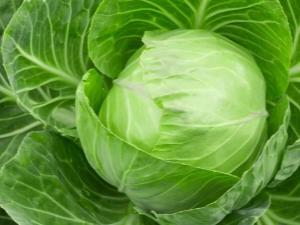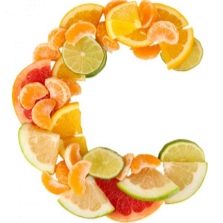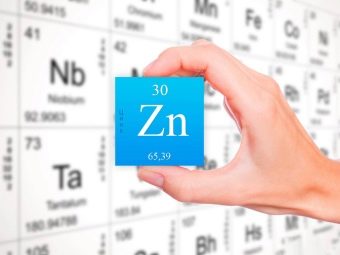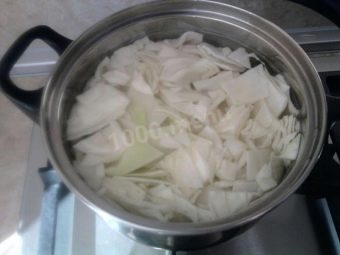White cabbage: chemical composition and KBD

White cabbage is the oldest representative of the Cruciferous family.It is used to prepare various culinary dishes, it finds its application in cosmetology, in addition, there are many recipes of traditional medicine, which include the components of this vegetable.
Description
Mention of it as a food product and medicine has been preserved since the times of the Ancient Roman Empire - these lands are considered the birthplace of cabbage. Over time, this plant began to spread in the territories of Egypt and Greece, where this vegetable was considered an exquisite delicacy and only very wealthy people could afford it as a foodstuff. Today, cabbage has a huge variety of varieties and grows in all countries where there is a temperate climate.
In Russia, cabbage is distributed almost everywhere - it is grown on an industrial scale, as well as in summer cottages and farmsteads. Russian people eat cabbage with pleasure and often this vegetable is loved and honored as well as potatoes.
This popularity is due to the uncommon taste of cabbage, as well as its rich content in substances valuable to the body. In addition, cabbage helps to maintain the shape due to its low calorie content, so it is part of various low-calorie diets.
What contains?
Cabbage white variety contains in its composition fats, vitamins, minerals, and also this vegetable has a large amount of plant fiber. The chemical composition, based on 100 g of fresh cabbage, is as follows:
- protein components - 1.7 g;
- fat components - 0.25 g;
- carbohydrate components - 4.6 g;
- organic acids - 0.31 g;
- water - 90.5 g;
- carotenoids (vitamin A) - 3.1 μg;
- thiamine (vitamin B1) - 0.05 mg;
- Riboflain (vitamin B2) - 0.04 mg;
- choline (vitamin B4) - 10.6 mg;
- pyridoxine (vitamin B6) - 0.2 mg;
- folic acid (vitamin B9) - 23 µg;
- ascorbic acid (vitamin C) - 60.3 mg;
- tocopherol (vitamin E) - 0.13 mg;
- phylloquinone (vitamin K) - 75 mg;
- Vitamin PP - 0.10 mg;
- Niacin - 0.6 mg;
- potassium - 310 mg;
- calcium - 47 mg;
- magnesium - 15 mg;
- sodium, 14 mg;
- sulfur - 36 mg;
- phosphorus - 32 mg;
- chlorine - 38 mg;
- aluminum - 569 mcg;
- boron - 198 µg;
- iodine - 3.25 mcg;
- cobalt - 3.1 µg;
- manganese - 0.18 mg;
- copper - 78 mcg;
- molybdenum - 11 µg;
- selenium - 0.4 µg;
- fluorine - 5,3 mcg;
- Zinc - 0.5 mg;
- saccharides, 4.5 g;
- essential amino acids - 0.367 g;
- replaceable amino acids - 0,867 g;
- sterols - 2.1 mg.
Analyzing the detailed chemical composition of cabbage, we can conclude that the white varieties are richest in ascorbic acid (66.8%) and vitamin K (63.4%), and also contain a high amount of potassium minerals (12.2%), cobalt (30 , 2%) and molybdenum (14.4%). These components perform the following functions:
- ascorbic acid supports the immune defense of the body, and also contributes to the good absorption of iron, in addition, this vitamin is necessary for redox processes and vascular strengthening;
- vitamin K provides the ability of blood to clot by stimulating the production of prothrombin;
- potassium regulates the processes of water-salt and acid-base balance, which is necessary for normal physiological level of arterial blood pressure and conduction of nerve impulses of the central nervous system;
- cobalt is involved in the metabolism of polyunsaturated fatty acids and improves the body's absorption of folic acid;
- Molybdenum is necessary for the implementation of a variety of enzymatic reactions, and is also responsible for the metabolism of amino acids.
Benefit and harm
Experts in the field of medicine believe that cabbage is indispensable in the diet of modern man. The reason for this is very weighty - this vegetable contains such a quantity of substances that cannot be found in any other vegetable.Minerals and components in cabbage are very wisely balanced by nature itself, and as a result of their use, our body gets the opportunity for harmonious work of all organs and systems.
The beneficial effect on humans when eating white cabbage is as follows:
- reduced risk of atherosclerosis;
- accelerates the elimination of toxins from the body;
- improves the condition of the vascular wall;
- the cardiovascular system is maintained at a physiological level;
- liver function is supported, and pathological processes in its tissues are reduced;
- maintaining blood glucose at a physiological level;
- immunity is stimulated;
- improves the general condition in diseases of the gallbladder, kidney and urinary system;
- development of pathological processes in gout is reduced.
When used, cabbage shows its qualities depending on the form in which it is used. So, fresh cabbage juice reduces inflammation in the urinary system, and also brings relief in the treatment of bronchitis, accompanied by persistent cough. Fresh juice from cabbage can be applied externally in the treatment of pustular rashes and juvenile acne. Even fresh, not treated cabbage leaves can be useful - they are used to treat arthritis, bruises, and small burn surfaces.
It is proved that in raw form, this vegetable is more useful - when processed with high temperatures, most of the valuable components of cabbage are destroyed.
Separately, you need to say about such a product as sauerkraut. On the content of ascorbic acid, it surpasses even citrus fruits. It was not for nothing that in the past centuries, sailors, before long seafaring, stored barrels of sauerkraut in the holds. Daily using this product, they increased the stamina of the body and protected themselves from scurvy. In addition, sauerkraut has another property - it makes the body less susceptible to the toxic effects of alcoholic beverages and prevents strong intoxication.
Despite a lot of positive qualities, cabbage dishes can not be consumed by all. White cabbage has certain contraindications.
- Inflammatory processes in the pancreas. Cabbage juice and vegetable fibers contribute to enhanced peristalsis and the production of enzymes, which greatly aggravates the condition of the diseased organ and the well-being of the person as a whole. Patients with pancreatitis raw cabbage is contraindicated, especially during periods of exacerbations. In remission, this vegetable can only be consumed after heat treatment or ripening no more than 100 grams per day.
- Bowel disease. Cabbage is contraindicated in inflammatory processes (enterocolitis), irritable bowel syndrome with increased peristalsis, as well as colic and spasms. Eating this vegetable will exacerbate symptoms, and may also cause stool failure, flatulence and discomfort.
- Children age up to three years. Cabbage at an earlier age is not suitable for small children due to the large amount of dietary fiber that the children's digestive system cannot cope with. In addition, this vegetable contains a certain amount of vinegar, and although it is minimal, but for the baby is an undesirable component that irritates his digestive tract. While taking cabbage, a child may have bloating and painful colic.
- The postoperative rehabilitation period. Although cabbage is considered a diet product, its dietary fiber is not suitable for people who recover after surgical interventions. For the body during this period, such food is considered too heavy, so it is required to exclude it from the menu.
- Renal failure and gallstones. Cabbage juice aggravates the course of these diseases, causing aggravations and pain.Sauerkraut and fresh juice can trigger the movement of kidney stones and gall bladder.
- Allergic reactions. The structure of the white cabbage contains the enzymes chitosan and histamine, which are allergens, which means that they are contraindicated for people who are prone to food allergic reactions. According to the results of many years of observation, allergists have found a pattern that is that cabbage allergy is transmitted to offspring at the genetic level from one generation to another.
Before introducing primer with white cabbage to the baby, the mother must do this under close monitoring of the condition of the child and the reaction of his body to this vegetable. Older people should also use cabbage with caution, bearing in mind the presence of contraindications.
The nutritional value
The nutritional value of white cabbage is determined by its content of protein, fat and carbohydrates (BJU). With a small caloric content, which is 27.8 kcal per 100 grams of the product, protein makes up 16% of the total specific weight, fats - 16.9%, carbohydrates - 67.10%. The percentage ratio may vary slightly in one direction or another, due to the conditions under which this vegetable grew. It is noticed that cabbage grown in the southern latitudes contains more protein components and polysaccharides.
In vegetables growing in the territories of northern latitudes, sugar is more abundant in cabbage.
Nutritionists have found that cabbage is a record holder in the content of protein components among vegetables and is second only to parsley, spinach and dill. If you compare white cabbage with other representatives of its genus, it is inferior in protein content by 1.5–2.7% Brussels sprouts, leafy and broccoli varieties.
Calorie content
Calorie cabbage depends on the method of its preparation. Young fresh raw cabbage, taken in a cabbage and chopped without adding salt or other components, gains no more than 28 kilocalories per 100 grams of product per calorie. However, calories will be added if salt, vegetable oil or other vegetables are added to the dish or, on the contrary, reduced, if the cabbage is subjected to heat treatment. It is worth paying attention to the following illustrative examples of the changes in the CABIL of white cabbage in different variants of its preparation based on 100 grams of the finished dish:
- salted cabbage contains 3.7 g of protein, 0.52 g of fat, 7.2 g of carbohydrates and has a caloric content of 44.9 kcal;
- sour cabbage (fermented) contains 1.9 g of protein, 0.1 g of fat, 4.5 g of carbohydrates and has a calorific value of 19.2 kcal;
- boiled cabbage with salt contains 1.6 g of protein, no fat, 3.95 g of carbohydrates and has a calorific value of 21.9 kcal;
- cabbage, steamed, contains 1.9 g of protein, 0.81 g of fat, 6.85 g of carbohydrates and has a caloric content of 27 kcal;
- cabbage puddings contain 6.15 g of protein, 6.03 g of fat, 32.2 g of carbohydrates and have a calorific value of 209.25 kcal;
- pancakes with cabbage contain 4.2 g of protein, 12.3 g of fat, 7.8 g of carbohydrates and have a calorific value of 154.5 kcal;
- cabbage in batter contains 34.44 g of protein, 5.67 g of fat, 11.83 g of carbohydrates and has a calorific value of 217.38 kcal.
Obviously, even in complex dishes, the caloric content of white cabbage is relatively small, but this vegetable’s health benefits are substantial. Therefore, doctors recommend regular consumption of food containing cabbage.
Diet: nuances of use
Diet for weight loss with the use of white cabbage is considered one of the most effective, given the low index of KBIL of this product. Nutritionists know the types of diets that can be more or less benign, where cabbage is used both raw, where it is the least calorie, and as part of certain dietary foods that contain high protein content, but low in carbohydrates.
Gentle variants of the cabbage diet are those where, in addition to cabbage, there are other components.For example, cabbage and cottage cheese or cabbage and potatoes. The hard options include those that do not mean in the composition of the diet nothing but cabbage. Such a mono-diet is considered to be an ordeal for the organism and its duration is not recommended for more than 3 days.
Most often, overweight is dumped on the sparing versions of the diet, where the daily calorie does not exceed from 1000 to 1200 calories and its duration is three, seven or ten days.
The most effective diet is that based on the use of sauerkraut. It is added to low-calorie foods and the total daily calorie should be from 860 to 1100 calories. Long-term practice and observations show that this version of the diet is the most balanced and effective. If you want to use a diet based on cabbage, you must adhere to the following recommendations:
- completely remove sugar and salt from the daily ration;
- eliminate the use of animal fats and culinary spreads;
- not to drink alcoholic beverages, even with a small dose of alcohol in the composition;
- per day to use up to two liters of liquid in the form of mineral water, decoctions of herbs, juice from cabbage, green tea;
- use mineral and vitamin supplements (dietary supplements);
- a week before the start of the diet, you should abandon the use of flour, fatty and smoked products, reduce the use of salt and spices;
- it is desirable not to combine food intake with liquid intakes.
Those who use the cabbage diet need to know that due to its low caloric content and low content of carbohydrate components, fatigue and decreased performance can be felt during the day, and in addition, these conditions can be accompanied by headaches. Cabbage often causes increased peristalsis and fermentation in the gastrointestinal tract, which may be accompanied by spasms and flatulence.
Together with taking cabbage, carrots, tomatoes, zucchini, onions, garlic, radishes, and spinach are allowed. Combined with dietary varieties of rabbit meat, lean beef, turkey or chicken (without the skin), low-fat varieties of sea fish are allowed. And you can also add dairy products with a low fat content and vegetable oils. Juices can be consumed only if they do not contain sugar.
For information on how to make a salad of white cabbage, see the following video.



















































